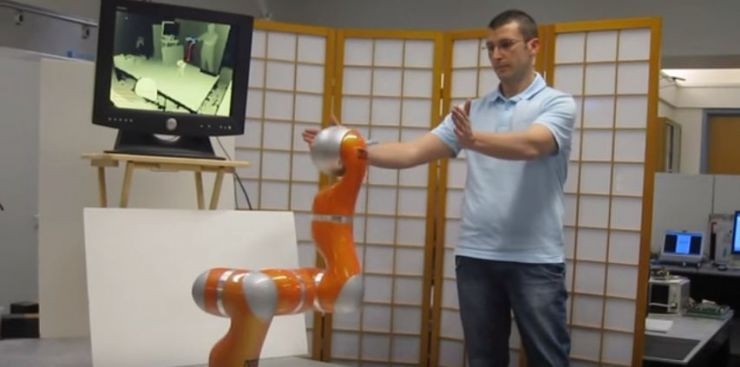
At present, robots still can't do something, one of them is that they can't feel pain. It is for this reason that we can put robots in some dangerous environments, or let them do things that humans are not willing to do or that threaten human life. However, two German researchers from the University of Hanover in Germany believe that in some cases, feeling pain and responding to pain may be a good ability for the robot.
The researchers developed a "artificial robotic nervous system" that teaches robots to feel pain, and in order to avoid damage to their motors, gears or electronic components, these robots need to respond quickly to pain. Last week, they presented the project at the IEEE International Conference on Robotics and Automation (IRA) in Stockholm, Sweden.
Why is it a good idea to let the robot feel pain? In the case of researcher Johannes Kuehn, the answer to this question is actually the same as the answer to "why let humans feel pain is a good idea." “Pain is a system that protects us,†he said. “When we avoid the source of pain, we can help us not be hurt.†Those who can't feel the pain are often more likely to get hurt because their body is affected. The damage can't make an instinctive response in time.
Kuehn is working with Professor Sami Haddadin to develop the project. Professor Sami Haddadin is one of the most famous physics and human interaction and security experts in the world. Kuehn said that by protecting robots from damage, their systems can also protect humans. We know that the number of robots is growing. In many cases, they work close to human workers. Some undetectable damage to robotic equipment can lead to production accidents and pose a threat to the safety of human workers. Kuehn and Haddadin concluded that if our human biological mechanisms can feel and respond to pain so effectively, why not design a bionic robot controller that mimics the biological mechanisms of pain? This controller responds to pain reflexively and then protects the robot in potentially dangerous interactions.
In fact, the idea of ​​this robotic reflection controller is not a new concept. About five years ago, Torsten Kroeger and his colleague La Sapienza at Stanford University and the University of Rome developed a similar controller to help the robot arm avoid collisions with humans.
Watch this video, which shows that the controller allows the robot to avoid collisions with humans, but these devices were originally designed to prevent the robot from hitting humans, but did not consider the safety of the robot itself (except for some attached products). In fact, designing an artificial intelligence robotic nervous system that can sense pain and respond to pain is a completely different matter. It needs to be based on how humans respond to painful touches, as Kuehn and Haddadin wrote in their ICRA papers:
Robots need to be able to detect and distinguish between unpredictable physical states and disturbances. For those situations that may cause potential harm to themselves, the robot needs to be rated and take appropriate countermeasures, ie reflections. In order to achieve this goal, the human prototype has become our inspiration, which means that the human reflection of pain will be used to design the robot pain sensory model and response control. Based on an understanding of human pain research, we focus on "normalizing" the pain perception of a robot as an explanation for touch.
Canned Tuna,Fresh Canned Tuna,Frozen Canned Tuna,Canned Skipjack Chunk
ZHEJIANG RETRONX FOODSTUFF INDUSTRY CO.,LTD , https://www.retronxfoods.com